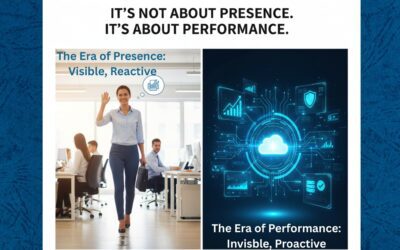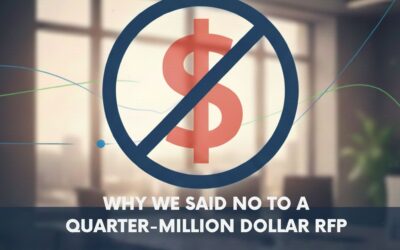Over the past twelve months, the rise of remote work has ushered in new levels of IT innovation and transformation not witnessed before.
As Microsoft’s Satya Nadella put it, “we’ve seen two years’ worth of digital transformation in two months.” The pace of transformation has indeed been remarkable, but is it sustainable, and to what extent are the impacts? To a degree, we know where we see the effects, both positive and negative.
Positively, we have adapted well, under odd circumstances, to a remote-first work environment. One could argue for or against, but generally speaking, the forced remote-first model has been widely successful across knowledge-focused verticals. Seemingly overnight, IT professionals worldwide built out systems with little strategic direction to continue workforce productivity in the face of absolute uncertainty and timeframe. From cloud consumption and digital workspaces to collaboration tools, adoption levels went through the roof.
While the impossible did prove possible, the doom and gloom of the situation started to show its ugly face. Employee monitoring. IT burnout. Disengagement. Productivity impacts. Low morale. Stress. Fragmentation of experience. Work-life imbalance. If this were a proof-of-concept, it would certainly not move through subsequent phases and would not be a desirable solution.
Yet we must remember this remote-first requirement was not by choice; it was forced. And it was not conducted through a controlled environment; it was chaos. Under controlled situations with less volatility and variability, perhaps the downsides would have been significantly less, and the upsides that much more significant. As a matter of fact, before the pandemic, many companies were successful in adopting a remote-first strategy, including the likes of GitHub and others. Nonetheless, remote work is nothing new; the pandemic just brought it to the forefront.
KPMG’s Future of Work stated, “virtual working has been predicted since the dawn of digital, but the next decade may well see it move from the sidelines to sweep through the employment landscape.” Penned in 2014, KPMG could by no means have envisioned a pandemic expediting such a claim. Across the 200 HR Directors and C-Suite executives included as part of their survey, 26% and 36% respectively, supported a work-from-anywhere (WFH, WFA, WFx) approach. Why was support not greater? Due to “A perceived decline in productivity and loss of employee cohesion, as well as plain tradition.”
Tradition – “an inherited, established, or customary pattern of thought, action, or behaviour”; “the handing down of information, beliefs, and customs by word of mouth or by example from one generation to another without written instruction.” In other words, traditions are the antithesis of change.
“We can’t possibly work remotely.”
“Why?”
“Because we always work in the office.”
Occam’s razor. Yet traditions can be broken, especially when we cannot resort to traditional ways. Remote work is here. It has its perks, albeit its forced nature in 2020 gave way to many concerns. Parity, inclusion, cohesion, perception. Fundamentally, these challenges can all be grouped.
Employee Experience and Engagement.
We have long been focused on the customer experience – how easy it is for companies, people, and partners to work with us, use our services, buy our products, or get our support. We have tirelessly worked with an external lens to make it as easy as possible to build our customer base and drive revenues. This is where our concept of a frictionless experience originated – make it an easy, enjoyable, flexible and rewarding experience to do business with us. However, have we overly ignored a critical part, our internal lens?
Though many adverse outcomes resulted from remote work, it changed our mindset and brought these challenges to the forefront. For a long time, employee experience has been a focus of HR, with Forbes stating back in 2017 that employee experience is the future of work and “the next journey for HR leaders will be to apply a consumer and a digital lens to their HR function.”
“Applying a consumer and digital lens is much more than just incorporating new solutions in HR. Being employee-centred and digital is about having a new mindset, plus a set of consumer-focused and technological skills to creating new HR solutions. Above all, it requires a belief in the power of leveraging the latest consumer technologies inside HR.”
In HR circles employee experience has been known, yet we now see employee experience outside HR, especially inside IT and technology. According to HBR, “your organization’s performance increasingly depends on your employee experience.” Yet what exactly is employee experience?
A journey of our people – from the moment they consider working with the organization through to the day they move on – where every interaction sets the stage towards a positive, or negative, employee experience. Technology plays a critical, if not the most crucial, role in supporting a positive employee experience in a remote-first world. However, bouncing back to HBR’s survey, not all businesses who prioritize employee experience view it as a technology concern – 40% believed it was the responsibility of HR, versus 5% that of IT. If employee experience is in HR’s hand, why isn’t HR influencing technology investments that support and drive positive employee experience?
We believe they are already.
In a recent discussion with an HR leader responsible for overseeing 15,000 employees globally, we found their focus on new ways of work centred around three key pillars – office design, employee wellness, and the hybrid workplace. All three pillars included some form of technology consideration around “making things better for the employee,” including consistency in experience (in office and out of office), the use of automation and simplified workflows, and parallels of a “digital by default” approach.
Their internal planning sessions include HR and IT at the table, among other business units, which have a decisive say in the organization’s direction, grounded on one common objective – employee experience. With HR’s involvement across many different areas of employee experience outside of technology – from recruitment, onboarding, benefits, wellness and workstyle management – HR’s ability to dictate how technology must align to employee-centred initiatives across the spectrum carries significant weight and credibility in defining technology objectives. HR has a daunting responsibility to determine and support new ways of work. Positively, technology is a great place to start and reap significant gains in employee experience.
According to Salesforce, “bad technology experiences have the biggest negative impact on office workers’ engagement,” where “72% of office workers feel unhappy and unmotivated when struggling with outdated and inefficient technology and 67% admit this affects the quality of their work.”
Workers also estimate “they waste more than five weeks every year, on average, due to outdated and inefficient technology,” which “can also have a big impact on a business’s reputation. Engaged office workers are eight times more likely than disengaged office workers to recommend their company to a friend looking for a job.”
In a remote-first world or a hybrid workforce (as the future loosely suggests, where employees work remotely full- or part-time), the detriments of using legacy or inefficient technology are only exasperated. Frankly, employees may give up and move on rather than deal with the challenges of the technology provided. We have seen this – where a poor technology experience can overwhelm any other benefit provided by the company.
HR must remain focused on contributing to technology strategy to foster a positive employee experience within the hybrid workplace. A proper Digital Workspace solution can deliver a consistent user experience from anywhere, facilitate access to all necessary resources (applications, desktops, and data), drive simplification of business workflows, manage work, support employee wellness, and remain highly adaptable to accommodate any micro or macro force faced by the business.
Employee Experience drives results.
According to Jacob Morgan’s The Employee Experience Advantage, businesses who invest in employee experience will drive incredible and beneficial results, including being:
- 5 times more likely to appear in Glassdoor’s Best Places to Work;
- 28 times more likely to appear in Fast Company’s Most Innovative Companies;
- More than twice as likely to appear on Forbes list of World’s Most Innovative Companies.
Further, the companies studied also returned over four times the average profit, despite being 25% smaller. Employee experience impacts the direct bottom line, and bottom-line improvements unlock greater capabilities for continued growth, innovation, and re-investment in employee experience. That is good for the business and great for people.
HR should start with people-centric technology.
By improving the overall technology experience for employees, businesses can remove a significant hurdle through the employee journey and let HR focus on the matters that drive further innovation across our people. After all, if the technology experience is lousy, everything else will be tarnished as a poor experience. HR leaders, start with technology! Explore the capabilities of a Digital Workspace solution to provide a holistic, consistent, seamless, and adaptable experience regardless of where your employees are and regardless of what endpoint technology they use (though, we highly recommend purpose-built devices and software to streamline employee onboarding – that’s a modern endpoint).
What is a Digital Workspace? What is a Modern Endpoint?
Lisa Taylor, President of Challenge Factory and author of The Talent Revolution, puts it best: “failing to place humans at the heart of the Future of Work is deeply problematic.” Yet, with technology being one of the greatest challenges to a positive employee experience and having such an intertwinement within the overall employee journey, it’s critical that technology strategies be people-centric. “Technology has an important part to play, but our discussions, questions, and experiments need to start with humans, and return to humans. Instead of asking how technology is changing us, ask how we want to change technology. Ask how technology can best be used to augment and support human productivity, career satisfaction and success, and work/personal life balance.”






0 Comments